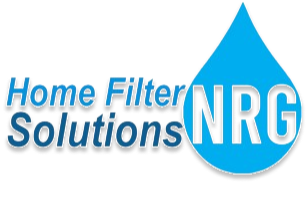Water can dissolve many minerals or chemicals and transport microbiological contaminants. The purpose of this fact sheet is to provide you with information about how you can test your water to help determine if it is safe to drink. The Standard Drinking Water Test outlined in this fact sheet has been created to detect chemical and microbiological contaminants that may occur in Western Australia waters.
The Department of Health and participating chemical and microbiological laboratories have endorsed the chemical and microbiological tests contained in the Standard Drinking Water Test.
The Standard Drinking Water Test will help to tell you:
- whether your water is suitable for drinking or food preparation
- the levels of contaminants in your water
- the aesthetic quality of your water.
Standard Drinking Water Test tests conducted by participating laboratories comply with National Association of Testing Authorities (NATA) (external site) requirements. Results provided by these laboratories are accepted by the Department of Health.
What will be tested?
The Standard Drinking Water Test has two components: Microbiological test and chemical quality test.
Microbiological tests
The microbiological test will identify total coliforms (a type of bacteria) and faecal coliforms in drinking water. The faecal coliform test (most commonly tested for thermotolerant coliforms or Escherichia coli) will indicate the level of faecal contamination in the water and how safe the water is to drink.
Chemical quality tests
The chemical quality test is made up of a range of chemical species.
Some of the elements are heavy metals that may pose a risk to your health while others may only affect the taste, odour and appearance of the water (These are called ‘aesthetic’ characteristics).
The list of Chemical quality tests can be found in Table 1.
Further chemical testing may be required:
- when a more comprehensive assessment of water quality is needed; or
- where specific hazards occur in the catchment area.
What should I do before I take a water sample?
Before you take a sample, contact the laboratory to obtain sampling bottles and information on the correct sampling procedure. Please note that your sample will not provide you with accurate information about your water unless the:
- correct sample bottles are used
- correct volume is taken
- sample is stored at the required temperature
- sample is transported to and arrives at the laboratory in the correct time
- correct procedure is used to take the sample.
What do the results mean?
The Department of Health is able to interpret laboratory results and provide you with general advice on how to make water safe to drink.
Generally, the results will be compared to the microbiological, physical and chemical guideline values set out in Section 10.3.7 (commencing page 208) of the “Australian Drinking Water Guidelines” (external site).
Laboratories may also be able to assist you with additional technical advice about the analysis. However, laboratories are not in a position to provide you with health related advice.
Will the standard drinking water test for all contaminants?
No. The catchment or source of your water can affect the water quality in many ways, especially after heavy rainfall or fire. Water can dissolve chemicals and transport microbiological contaminants while it travels through or across the catchment area. It is important that you identify the hazards that occur in or on the catchment area before you test the water. This will vary from location to location and from time to time.
What are some hazards in catchment areas?
For rainwater collected off roofs look for:
- intensive agriculture, industry or mining
- spray drift from agricultural spraying of pesticides
- animal carcasses or excessive accumulation of leaf litter in roof gutters
- ash or debris from fires
- a chimney from a wood burner
- lead flashing on roofs or near chimneys
- discharge pipes from roof mounted appliances such as evaporative air-conditioners or hot water systems.
For bore/dam water look for:
- excessive or inappropriate use of fertilisers, animal manures, pesticides, herbicides and insecticides
- poorly maintained septic tanks and other liquid waste disposal systems
- fuel and chemical storage areas
- intensive agriculture, industry or mining
- accidental spills of chemicals.
If you find any of these activities or items in or on the catchment area you may wish to consider testing for additional parameters.
It may also be possible to gain more information about your catchment area by contacting your neighbours, your local government environmental health officer or the local regional office of Department of Water and Environmental Regulation (external site).
For more information
https://www.health.wa.gov.au/Articles/S_T/Standard-drinking-water-test

